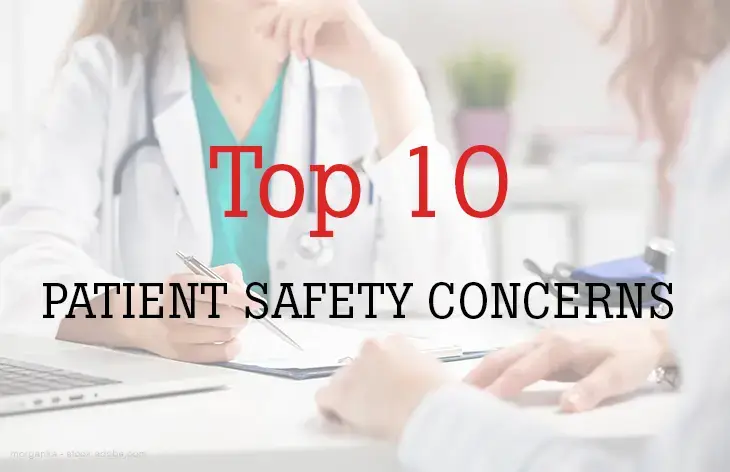The Becker’s Clinical Leadership & Infection Control released Ten Top Patient Safety Concerns that should be a priority in 2018, based on research from over the past year. Below is a synopsis of their findings in no particular order:
- Lack of EHR Interoperability- While the adoption rate of EHRs has continued to increase, poor interoperability remains a major challenge that can have a negative impact patient care and outcomes.
- Poor Hand Hygiene- Poor hand hygiene adherence was linked to numerous infections and deaths in 2017 and it remains a top safety concern among healthcare organizations nationwide.
- Nurse-patient Ratios- Improper healthcare staffing can have a negative impact on patient care. One study found that every extra patient on a nurse’s caseload increased mortality rates by 7 percent. Many states are now requiring minimum staffing ratios in healthcare facilities.
- Supply Shortages- Drug and medical supply shortages remain a major obstacle for healthcare providers. In fact, some hospitals were forced to delay major operations and treatments due to nationwide shortages in 2017.
- Quality Reporting- CMS acknowledged the current challenges with the quality reporting system including the many steps involved in submitting them, taking time away from patients. There are plans to simplify reporting measures for hospitals and physicians, and determine which measures are most important for improving quality and outcomes.
- Virus Outbreaks- The spread of misinformation regarding vaccine safety resulted in a decline of immunization rates among certain populations. Due to the low vaccine adherence in these specific areas, there were several historic outbreaks of vaccine-preventable viruses in 2017.
- Mergers and Acquisitions- In 2017, over 100 healthcare mergers or acquisition deals were announced. However, research has found that hospital consolidation is not always best for patient care. In fact, it can reduce healthcare competition, limit patient choice, and hinder innovation and quality. Additionally, patients who live in competitive healthcare markets often have better health outcomes and lower mortality rates than those who live in areas with less healthcare competition.
- Physician Burnout- Physician burnout has become a national epidemic. In 2017 more than fifty percent of physicians experienced frequent or constant feelings of burnout. One of the major sources of physician burnout includes EHRs and the enormous amount of time required for data entry and clerical work.
- Antibiotic Resistance- Antibiotic resistance is an ongoing challenge for healthcare organizations and will continue to be a major patient safety concern for hospitals around the world in 2018.
- Opioid Epidemic. The nation’s opioid epidemic poses many challenges for healthcare organizations, including drug diversion, increasing rates of overdose, and secondary exposure among frontline providers caring for overdose patients.
References:

Leave a Reply
You must be logged in to post a comment.